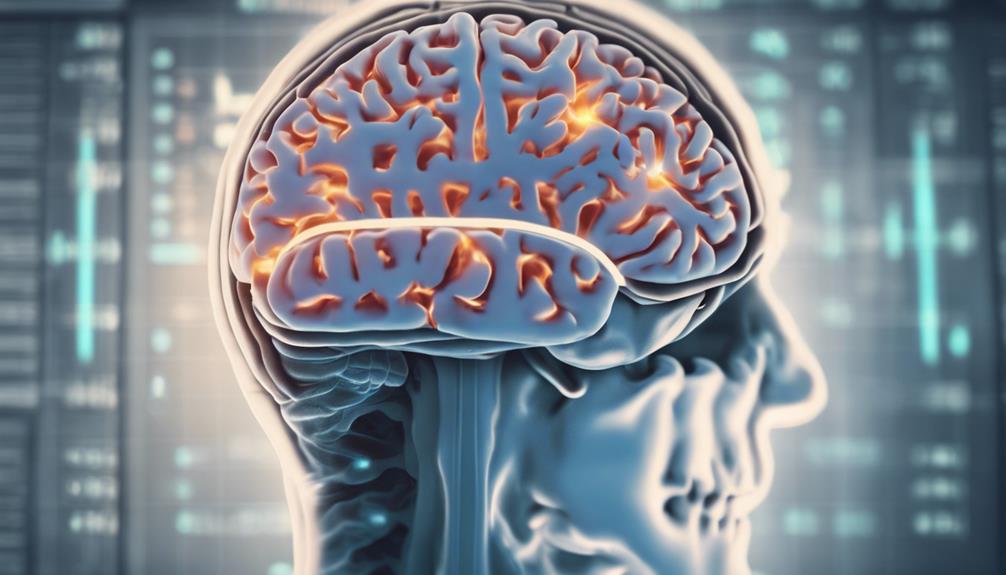
Embarking on the exploration to reveal the potential of hypnosis for pain relief uncovers a world of profound possibilities deeply rooted in the mind-body connection. As we journey through the intricate pathways of hypnotic induction techniques and delve into the fascinating interplay between brain activity and hypnotic analgesia, a tapestry of transformative insights begins to emerge. Stay tuned to discover how the synergy of relaxation, focused attention, and suggestibility can pave the way for a paradigm shift in pain management, offering a tantalizing glimpse into the domain of holistic healing that transcends conventional boundaries.
Hypnotic Induction Techniques
Utilizing various methods rooted in relaxation and focused attention, hypnotic induction techniques serve as effective tools to guide individuals into a receptive hypnotic state where suggestions can be readily accepted for therapeutic purposes. By incorporating relaxation techniques, individuals are encouraged to let go of tension and enter a state of heightened suggestibility. Focused attention plays a crucial role in hypnotic induction, directing the individual's awareness towards the hypnotist's instructions and away from external distractions.
Moreover, imagery is often employed to enhance the hypnotic experience, allowing individuals to vividly visualize the suggestions being presented. Language patterns are carefully chosen to bypass the critical mind and communicate directly with the subconscious, fostering receptivity to positive changes. The pacing of the induction is tailored to the individual's responsiveness, ensuring a smooth shift into the hypnotic state.
Different styles of hypnotic inductions, such as progressive relaxation or rapid induction, can be customized to suit individual preferences and optimize the effectiveness of the session. Overall, hypnotic induction techniques offer a structured approach to inducing trance-like states for therapeutic interventions.
Brain Activity and Hypnotic Analgesia
An intriguing aspect of the relationship between brain activity and hypnotic analgesia lies in the targeted influence of hypnotic suggestions on specific regions involved in pain modulation. Hypnotic suggestions wield a profound impact on the brain and spinal cord's processing of pain signals, leading to a reduction in perceived discomfort.
Through advanced imaging techniques, researchers have identified the specific brain areas implicated in pain modulation during hypnotic inductions, shedding light on the neural mechanisms underlying hypnotic analgesia. The state of hypnosis induced by skilled practitioners is associated with discernible changes in brain activity, ultimately contributing to the alleviation of pain symptoms.
Despite significant advancements in understanding the effects of hypnotic analgesia on brain function, several questions remain unanswered regarding the precise mechanisms through which hypnosis exerts its pain-relieving benefits. Further research into the intricate interplay between hypnotic suggestions and brain activity is essential for harnessing the full potential of hypnosis as a tool for pain management.
Specific Brain Area Targeting

Targeting specific brain areas for pain relief through hypnosis involves precise modulation of neural activity in regions associated with pain processing. Hypnosis has the ability to target key areas such as the anterior cingulate cortex and insula, which play essential roles in pain perception.
Studies utilizing imaging techniques have demonstrated that hypnotic inductions can induce changes in brain states linked to pain processing, leading to tangible relief. By honing in on these specific brain regions, hypnosis can effectively alter the brain's response to pain signals, resulting in decreased pain intensity and enhanced pain management.
The utilization of hypnotic suggestions can impact the functioning of both the brain and spinal cord, ultimately producing analgesic effects in individuals grappling with chronic pain conditions. Understanding the neurobiological effects of hypnosis on pain processing is crucial for refining the efficacy of hypnotic interventions tailored for targeted pain relief.
Hypnosis Beyond Imagination
Exploring the vast domain of hypnosis reveals its potential to transcend conventional boundaries, offering innovative avenues for addressing chronic pain and enhancing overall well-being. Hypnosis has emerged as a powerful tool in reducing chronic pain intensity and improving the quality of life for individuals with various conditions. Renowned researchers like Gary Elkins, Mark P. Jensen, and David R. Patterson have conducted studies showcasing the efficacy of hypnosis interventions in managing chronic pain. Techniques such as self-hypnosis and relaxation training are commonly utilized in hypnosis interventions for conditions like arthritis, fibromyalgia, and low-back pain.
Thirteen controlled studies have confirmed the significant effectiveness of hypnosis in reducing chronic pain across different patient populations. Additionally, integrating hypnosis with other therapies, such as cognitive-behavioral approaches, has shown promising results in multimodal treatment approaches for chronic pain management. By incorporating self-hypnosis and relaxation training into treatment regimens, individuals can experience not only pain reduction but also an overall improvement in their well-being. Hypnosis offers a unique and holistic approach to chronic pain management that goes beyond traditional methods, opening up new possibilities for enhancing patients' quality of life.
Mechanisms of Hypnotic Analgesia

Exploring the intricate workings of hypnotic analgesia reveals the fascinating mechanisms through which hypnotic suggestions can effectively alleviate pain perception. When delving into the mechanisms of hypnotic analgesia, several key points come to light:
- Hypnotic suggestions: By harnessing the power of suggestion, hypnosis can influence the way the brain and spinal cord process pain signals, resulting in tangible analgesic effects.
- Brain processing: Specific brain regions are activated during hypnosis, as evidenced by imaging studies, showcasing how hypnosis can modulate brain states to diminish the experience of pain.
- Cognitive processes: The neodissociation and sociocognitive theories offer valuable insights into the cognitive mechanisms at play during hypnotic analgesia, shedding light on the complex interplay between mind and body in pain relief.
These aspects underscore the multifaceted nature of hypnotic analgesia, encompassing both neurobiological processes and cognitive functions to achieve effective pain management.
Additive Effects of Hypnosis
Highlighting the synergistic advantages of incorporating hypnosis into pain management strategies, the additive effects of hypnosis reveal a promising avenue for enhancing traditional interventions and improving overall outcomes in chronic pain relief. Studies have demonstrated that when hypnosis is integrated into treatment plans for chronic pain, it can augment the effectiveness of conventional pain management techniques. By combining hypnosis with approaches like cognitive-behavioral therapy (CBT) or medication, individuals may experience greater reductions in pain intensity and improved overall well-being.
Research underscores the synergistic benefits of using hypnosis alongside standard medical interventions, showcasing its potential to enhance existing pain management strategies. The additive effects of hypnosis not only offer a complementary approach to pain relief but also provide a holistic solution for individuals seeking to alleviate chronic pain. Integrating hypnosis into multimodal treatment plans can lead to more holistic and impactful outcomes for those grappling with persistent pain issues.
Hypnosis for Pain Acceptance

Utilizing hypnosis as a tool for enhancing pain acceptance in chronic pain management has garnered substantial support from research findings. Hypnosis plays a pivotal role in helping individuals with chronic pain accept and cope with their condition more effectively. Through hypnotic interventions, individuals can experience a shift in their perception and response to pain, ultimately leading to enhanced pain acceptance. This is achieved by altering cognitive processes related to the experience of pain, promoting a more adaptive coping mechanism. Integrating hypnosis into chronic pain management not only aids in pain acceptance but also contributes to an overall improved quality of life for individuals battling chronic pain.
- Hypnosis helps individuals accept and cope with their pain more effectively.
- Hypnotic interventions enhance pain acceptance by changing perception and response to pain.
- Hypnosis can shift cognitive processes related to pain experience, promoting acceptance.
Clinical Hypnosis Imaging Studies
Clinical imaging studies have revealed the intricate workings of hypnosis in mitigating pain perception.
By examining brain and spinal cord responses to hypnotic suggestions, researchers have pinpointed key areas involved in pain modulation.
These studies shed light on how hypnosis induces changes in brain states to alleviate discomfort and enhance overall well-being.
Brain Activity Changes
Neuroimaging studies have revealed specific brain activity changes associated with hypnotic suggestions for pain relief, shedding light on the mechanisms underlying the effectiveness of hypnosis in pain management. Clinical imaging studies have shown that hypnosis influences brain and spinal cord processing of pain signals, leading to altered brain functioning related to pain relief. Hypnotic inductions trigger changes in brain states involved in pain processing, as evidenced by neuroimaging techniques capturing distinct brain activity patterns during hypnosis for pain management.
- Hypnotic suggestions alter brain functioning
- Brain and spinal cord processing affected by hypnosis
- Neuroimaging shows distinct brain activity patterns
Pain Perception Alteration
Alterations in pain perception within the brain have been convincingly demonstrated through clinical hypnosis imaging studies. These studies reveal that specific brain regions involved in pain processing are either activated or deactivated during hypnosis, leading to the modulation of pain sensations.
Through neuroimaging techniques, researchers have observed changes in brain activity related to pain perception under hypnosis. The hypnotic suggestions given during these sessions have been shown to influence the brain's pain processing regions, further contributing to the significant role played in the effective modulation of pain perception, highlighting the potential of hypnosis as a tool for managing pain.
Hypnotic Suggestion Effects
Exploring the effects of hypnotic suggestions on brain activity during pain perception reveals intriguing insights into the mechanisms of pain relief through clinical hypnosis imaging studies.
Neuroimaging techniques have identified specific brain areas affected by hypnotic suggestion effects, shedding light on how hypnosis modulates brain activity related to pain perception.
Research demonstrates that hypnotic inductions can lead to changes in brain states that contribute to pain relief, showing the influence of hypnotic suggestions on the brain and spinal cord pain processing.
Understanding the brain areas involved in processing pain during hypnosis provides valuable information on the potential mechanisms underlying the effectiveness of hypnosis for pain relief.
Frequently Asked Questions
Can Hypnosis Help With Pain Relief?
Hypnosis techniques offer a valuable alternative therapy for pain management by tapping into the mind-body connection to alleviate pain perception. Its benefits include reduced chronic pain intensity and improved outcomes in conditions like arthritis and fibromyalgia.
Integrating hypnosis with cognitive-behavioral approaches shows promising results in managing chronic pain, with lasting effects on pain relief. Hypnotic interventions, such as self-hypnosis and relaxation training, have been found notably more effective than no-treatment conditions in pain management.
What Research Suggests Regarding Hypnosis and Pain?
Research suggests that hypnosis is highly effective in managing pain, with studies showing significant reductions in chronic pain across various conditions. Clinical evidence highlights the psychological benefits of hypnosis, emphasizing the mind-body connection in pain management.
As an alternative therapy, hypnosis offers a promising approach to pain relief, surpassing no-treatment conditions in efficacy. These findings underscore the consistent effectiveness of hypnosis in alleviating chronic pain.
What Are the Four Steps of Hypnosis in Order?
Hypnosis techniques involve several steps, starting with hypnotic induction to relax and focus the individual.
Next comes deepening to enhance the hypnotic state, making them more receptive to hypnotic suggestions.
These suggestions deliver therapeutic messages to the subconscious mind, aiding in pain management and leveraging the mind-body connection.
The final step, termination, marks the conclusion of the session, returning the individual to full awareness.
Incorporating relaxation techniques is essential for effective hypnosis sessions.
Has Research Shown Hypnosis to Be Effective in Treating Pain?
Research has shown that hypnosis is effective in treating pain, with clinical trials supporting its efficacy. Studies have demonstrated that hypnosis can modulate brain activity, alter pain perception, and enhance cognitive control in managing chronic pain.
As an alternative therapy, hypnosis offers a promising approach to pain management by addressing the psychological aspects of pain. Its consistent efficacy across various chronic pain conditions highlights its potential in improving patient outcomes.
Conclusion
To sum up, the ultimate guide to ensuring pain relief with hypnosis highlights the power of relaxation, focused attention, and suggestibility in managing chronic pain.
By targeting specific brain areas and integrating hypnosis with traditional approaches, individuals can experience holistic and effective relief.
Hypnosis transcends imagination, offering a unique and powerful tool for pain management.
Embrace the journey of discovering the transformative effects of hypnosis in alleviating persistent pain issues.




